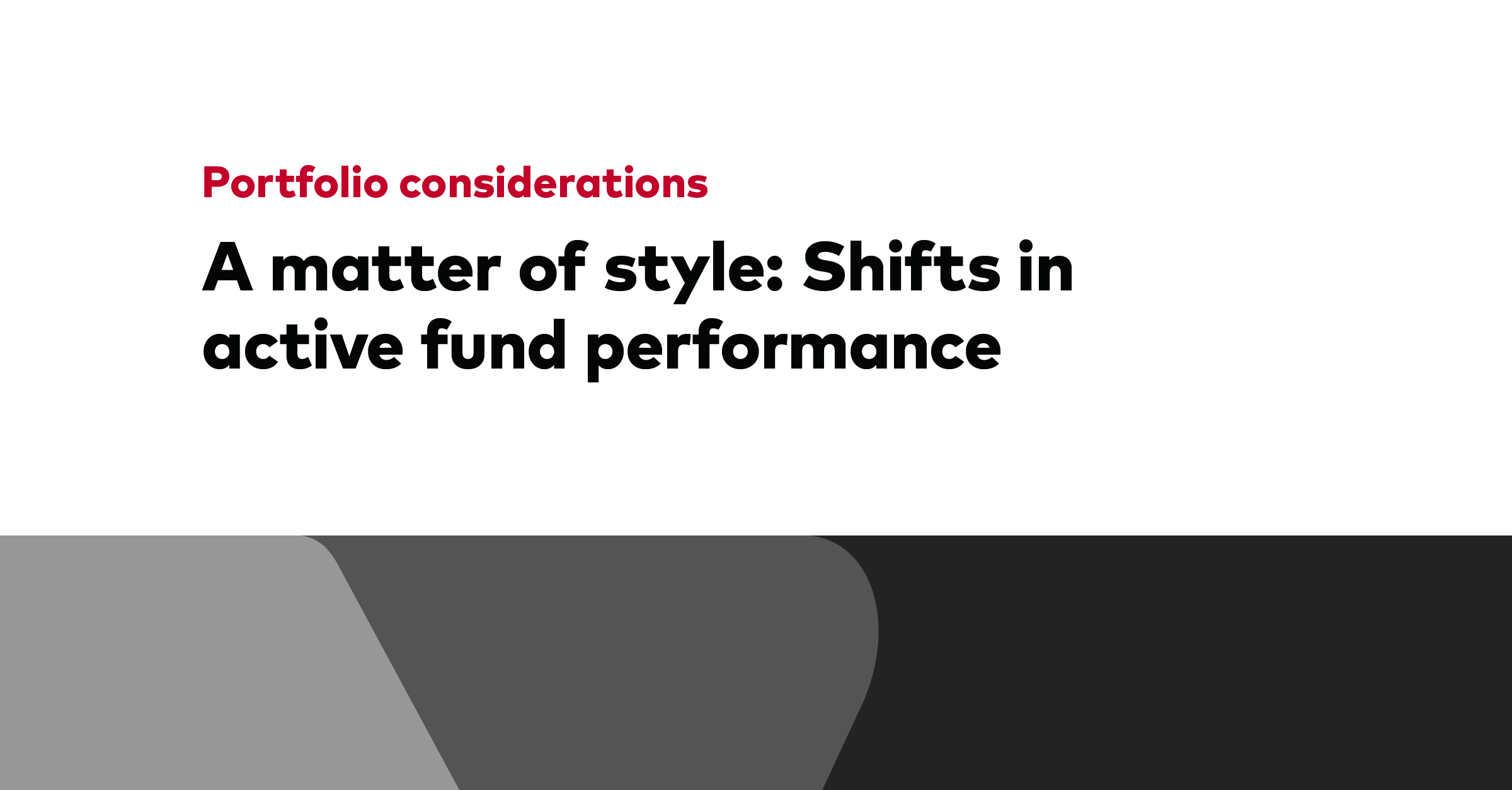Expert insight
Style-ish? Active style drift when styles are in vogue
October 08, 2025
Imagine investing in an active equity fund that promises a focus on growth—only to discover that the fund has moved away from its stated style, and many of its holdings are instead value stocks. This phenomenon, known as style drift, can catch investors off guard and can sometimes lead to disappointment, as it causes the actual style exposure of portfolios to differ from expectations.
Large value and large growth active funds drift in style regardless of the relative performance of growth and value
Notes: Data are for January 2000 through December 2024 for U.S.-domiciled active equity open-ended and exchange-traded funds assigned to Morningstar’s Large Value and Large Growth style boxes whose legal fund name explicitly references “growth” or “value.” Growth versus value style exposure is the asset-weighted difference in raw value-growth score (which determines horizontal position in the Morningstar equity style box) between a fund and that of its Morningstar style index. The Morningstar growth and value style indexes are Large-Mid Cap Broad Growth and Large-Mid Cap Broad Value, respectively. To avoid conflating the effects of ordinary stock-level capital appreciation, funds that drift outside of the Large vertical style box category at any point are excluded. Trailing six-month style index returns are the percentage point difference in total cumulative returns between the Morningstar growth and value style indexes beginning in the following month and ending six months later. Past performance is not a guarantee of future returns. The performance of an index is not an exact representation of any particular investment, as you cannot invest directly in an index.
Sources: Vanguard calculations, using data from Morningstar, Inc.
What causes style drift?
Style drift is often attributed to stock selection.1 When active fund managers add stocks outside their fund’s stated investment style, the portfolio can start to stray. For example, a manager of a small-capitalization growth fund that adds large-capitalization value stocks will see the fund’s style orientation tilt on two fronts: from small-cap toward large-cap, and from growth toward value. Over time, repeated out-of-style stock selection can cause the fund’s actual style to differ from what was promoted to investors.
Why might active managers allocate outside their fund’s stated style? One hypothesis is that active managers seek out styles that are in vogue; that is, they embrace styles that they anticipate will outperform their own, even if it means drifting from their stated mandate.
The figure tracks asset-weighted monthly style exposures of U.S. active equity funds assigned to Morningstar’s Large Value and Large Growth categories relative to their style benchmarks against relative style performance over the subsequent six months. The figure illustrates that active funds’ style exposures are often uncharacteristic of their stated investment style: Large value funds persistently tilt toward growth away from their style benchmark, while large growth funds—although more often aligned with growth—traverse both styles.
The high degree of dispersion in style exposures demonstrates that both large value and large growth funds frequently drift from the styles that define them.2
Does style drift anticipate outperformance?
The evidence on the relationship between style drift and outperformance shown in the figure is mixed. For large value funds, drift doesn’t predict the dominance of one style—if it did, we would expect to see a clear, positive link between style exposure and relative performance. For large growth funds, there’s a weak tendency for drift to anticipate the prevailing style.3
Ultimately, active fund outperformance depends on the ability of the active manager to select stocks that beat an appropriate style benchmark. Whether or not managers can time fashionable shifts between styles, our results remind investors that the only guaranteed result of out-of-style stock selection is style drift itself. Investors who seek reliable style exposure should review how consistently an active fund has adhered to its stated investment style in the past.
1 Style drift may occur due to general market dynamics; stock-level capital appreciation, for instance, may cause the size orientation of a portfolio to change over time.
2 We find that large value and large growth index funds, by contrast, exhibit strong adherence to style over the same period.
3 Replicating the analysis using six-month leading returns, we find little to no evidence that active fund style drift follows the outperformance of one style over the other.
Notes:
All investing is subject to risk.
Diversification does not ensure a profit or protect against a loss.

